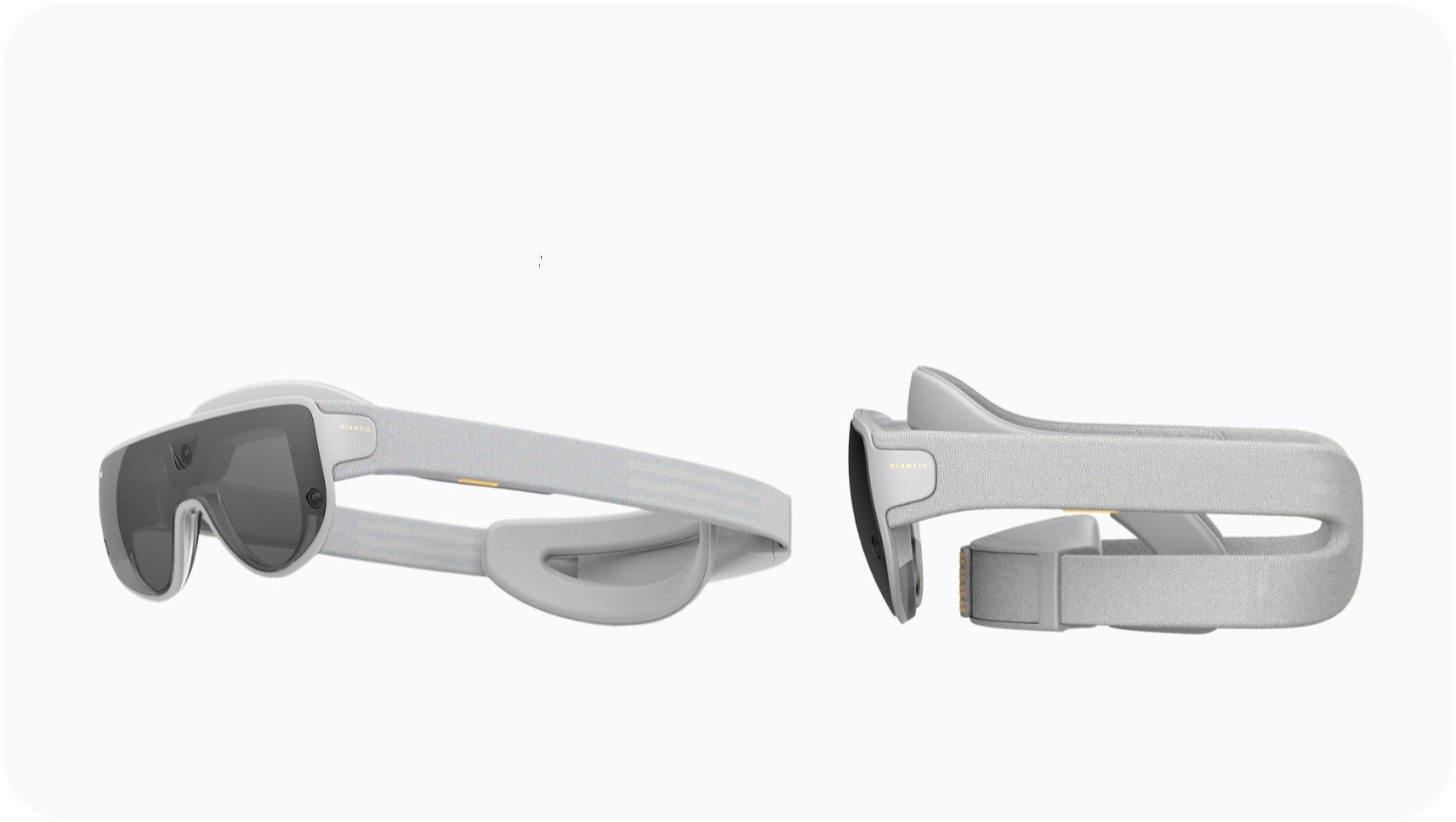
Pokémon Go developer, Niantic, has come a long way. The company is more than its cultural juggernaut game, and a recent demo released on Wednesday suggests it might be one to watch when it comes to actually building proper augmented reality hardware.
Niantic has teased an AR device before, but the new demo shown off at Qualcomm’s Snapdragon Summit has “actual headset gameplay” which, while jittery and basic, looks surprisingly ready for primetime. The Qualcomm and Niantic partnership is now going to extend beyond hardware into software that could bring similarly impressive AR experiences to other headsets, too.
Reference designs
Niantic’s “Outdoor AR Headset” looks like a thin pair of goggles that pair with some kind of controller, and notably, don’t seem to need a smartphone to work. The demo video Niantic released shows users controlling characters running up the side of a wall, receiving contextual information at a point of interest, playing some kind of knockoff Beyblade game, and even fighting other players in a robot duel on a roof. It seems fun?
Niantic describes its headset as a reference design and press materials suggest it’s “powered by Qualcomm.” While Qualcomm has previously shown AR concepts that use the Snapdragon XR2 Gen 1 (the popular VR chip that powers the Quest 2), Niantic’s hardware runs on the AR2 Gen 1 platform, a new chip Qualcomm announced alongside the demo.

The AR2 Gen 1 is purpose-built for AR devices, offering distributed processing through processors and co-processors on AR hardware itself, and with a companion smartphone, just like Qualcomm rigged with its older XR 2 Gen 1 concept. It’s also ships with support for Wi-Fi 7, like the Snapdragon 8 Gen 2. Thanks to its multi-chip architecture, it can be split into different parts to fit into slimmer AR hardware.
AR Mapping
The bigger announcement might end up being the companies’ plan to integrate Niantic’s Lightship VPS with Qualcomm Spaces in 2023. Lightship Visual Positioning System or Lightship VPS is Niantic’s tool for creating location-based AR experiences. To borrow the company’s own description, it’s a gigantic “3D AR map of the world,” that allows AR objects you place in to be persistent across apps, phones, and users.
By adding Lightship to Qualcomm Spaces, the chipmaker’s developer platform, anyone building an experiences or hardware with the AR2 Gen 1 in mind will get an immediate leg up. It requires investment from developers and hardware manufacturers, but considering Qualcomm’s influence, it could be big for future AR hardware.
That’s what’s interesting about Niantic’s ongoing work in the AR space. The company has vision, just like Meta, but for the moment, it’s not really promising anything more than cool apps, possible hardware, and software systems that should benefit anyone trying to make AR work. A little focus and restraint goes a long way.







